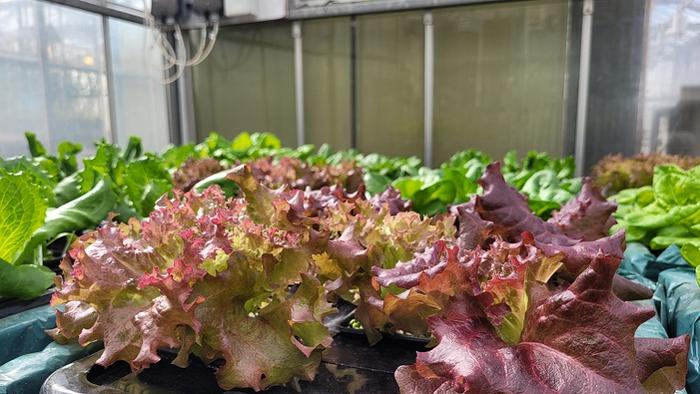Experts At Harper Adams University Investigate Into Fresh Produce Quality Issues
An investigation into fresh produce quality issues has recently been published by researchers from the Harper Adams Centre for Crop and Environment Science (CCES).
Dr Andrew Beacham and Professor Jim Monaghan have been investigating the problem of tipburn in lettuce crops. This condition causes the browning and collapse of leaves and is an important issue for the fresh produce industry.
Dr Beacham said: “Tipburn is a difficult problem to control, and even to investigate, because it can be influenced by a range of environmental factors which can alter the occurrence and severity of symptoms. Because of this, it is a key quality concern for growers and can result in the rejection of entire crops.”
The work required the development of a custom-built hydroponic system to measure the development of the condition in lettuce plants grown in a soil-free nutrient solution. The team then used this system to identify differences in resistance to tipburn across numerous lettuce varieties. This work was funded by Defra and carried out with colleagues at the University of Warwick. The results were published in the Journal of the Science of Food and Agriculture.
“By screening many different lettuce varieties, we were able to identify those with the best levels of resistance to tipburn which can now proceed to crop breeding programmes to help generate improved varieties” said Professor Monaghan.
The researchers then proceeded with their investigation of the condition using the varieties they had identified.
Dr Beacham added: “As yet, very little is known about the underlying molecular basis of tipburn. Looking for genetic differences between the most resistant and most susceptible varieties can give us clues as to what is involved in the resistance process.”
In work funded by the Biotechnology and Biosciences Research Council and in collaboration with colleagues at the University of Cambridge, the team began to investigate the genetic basis of the condition, which is thought to be associated with a deficiency of calcium in the leaves. This work was published in the journal Plant Physiology and Biochemistry.
“We found that levels of expression of calcium transporter genes differed between resistant and susceptible lettuce varieties. This begins to provide us with clues about the physiological processes that might contribute to resistance to this condition and provides further information that could help in the management of tipburn” said Dr Beacham.
The team are now continuing their research into the genes associated with the condition in order to further define its underlying basis.
Professor Monaghan added: “The more we know about this condition, the better equipped we are to improve food quality and reduce waste, thereby increasing the sustainability of fresh produce production systems.”

